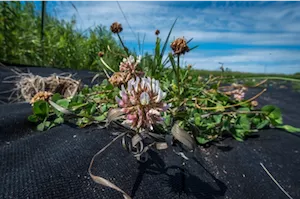
Herbivores and plant defences affect selection on plant reproductive traits more strongly than pollinators
The diversity of floral structures observed in nature is thought to have arisen due to selection by pollinators since they are required for the successful reproduction of many land plants. However, increasing evidence also suggests herbivores (e.g. chewing insects) may also influence natural selection on plant floral traits since they use many of the same cues to locate plant floral structures (e.g. large, vibrant displays) and often consume flowers and seeds. As a result, plants have evolved a number of ways of protecting themselves from herbivore damage (e.g. chemical plant defenses). By influencing how plants interact with herbivores and pollinators (e.g. by reducing feeding), plant defenses may change the extent to which these factors impose natural selection on plant floral structure, although this remains largely unexplored. In this new paper, Santangelo et al. test the hypothesis that plant defenses alter the strength of natural selection imposed by herbivores and pollinators. They planted 800 white clover plants in a common garden and manipulated plant defense, herbivores, and pollinator. Overall, they found that herbivores imposed stronger selection on floral traits and that selection by pollinators was much weaker on average, contrasting traditional views that pollinators are the most important agents of selection on floral traits. However, selection by herbivores was weaker among chemically defended plants, consistent with defenses altering interactions with herbivores and changing patterns of natural selection. This paper greatly advances our understanding of the environmental factors most responsible for driving the diversification of plant floral traits.
